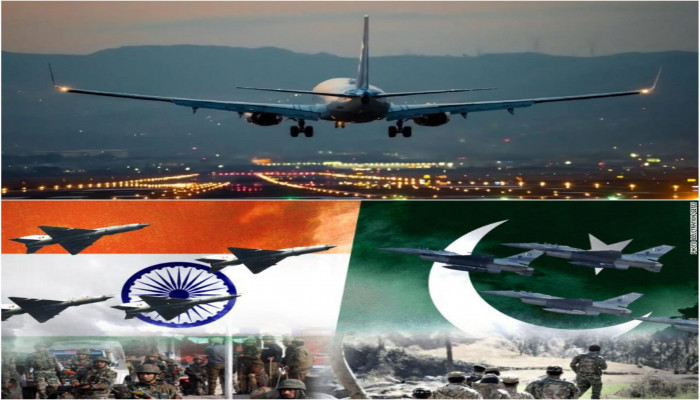India installs high-tech jamming devices to block Pakistan's aircraft navigation capabilities: Sources
- In Reports
- 12:54 PM, May 01, 2025
- Myind Staff
India has installed high-tech jamming systems across its western border to disrupt satellite navigation or Global Navigation Satellite System (GNSS) signals operated by Pakistani military aircraft, which has considerably weakened their ability to navigate and carry out attacks, according to sources. This step follows India’s decision to close its airspace to Pakistani flights from April 30 to May 23. According to sources, India's jamming systems can block signals from several satellite navigation networks, including the U.S. GPS, Russia’s GLONASS and China’s Beidou, all reportedly used by Pakistan’s military aircraft. Officials say the goal of this deployment is to reduce Pakistan’s ability to track movements, aim accurately, and effectively use guided weapons in the event of a conflict.
Amid growing tensions following the April 22 terror attack in Pahalgam that claimed 26 lives, India has taken a firm step by restricting its airspace to Pakistani aircraft, known as NOTAM (Notice to Airmen). The airspace ban, effective from April 30 to May 23, applies to all aircraft registered, operated, or leased by Pakistan, including commercial and military flights. This decision came shortly after Pakistani airlines had already begun avoiding Indian airspace out of concern for possible retaliation. With the restriction officially in place, these carriers will have to take longer and more expensive routes, such as flying over China or Sri Lanka, to reach destinations like Kuala Lumpur.
The move is part of a broader set of actions taken by India in response to the Pahalgam incident, including suspending the Indus Waters Treaty and revoking visas issued to Pakistani citizens.
Pakistan International Airlines (PIA), which operates a fleet of 32 planes, is likely to be struck by the recent changes. Flights from Pakistan to destinations in Southeast Asia and the Far East will now take an extra one to two hours. These longer routes mean higher fuel costs and longer working hours for crews, and they could lead to schedule changes or fewer flights. Meanwhile, Indian airlines like IndiGo and Air India, with much larger fleets and more aircraft, including 370 and 200 on order, are in a much stronger position to manage such disruptions.







Comments